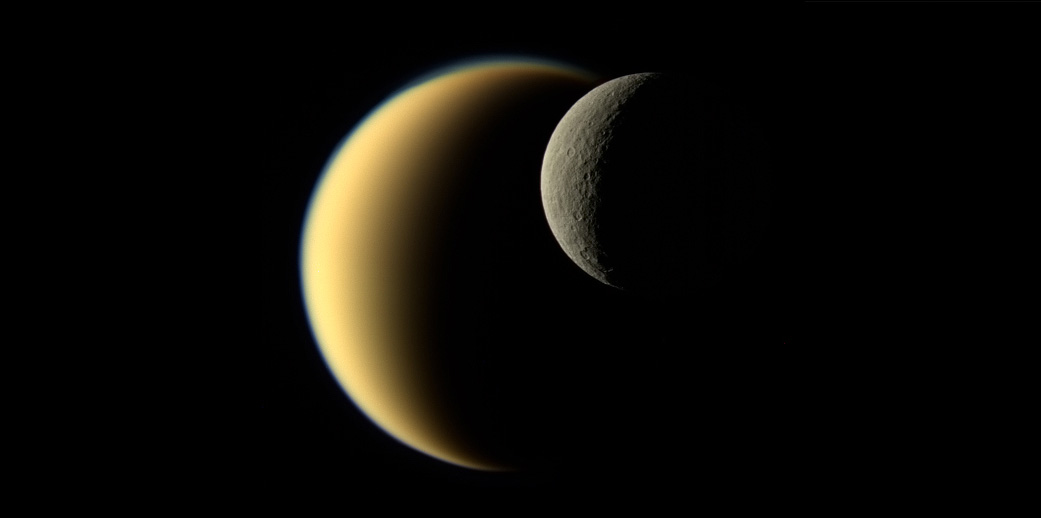Saturn's Contrasting Moons Pair Up in Spectacular Cassini Photo

Saturn's cratered moon Rhea passes in front of the hazy giant Titan in an incredible image from NASA's Cassini spacecraft, which completed its mission by diving into Saturn last September.
Cassini captured this photo of Saturn's two largest moons in visible light in 2009 using the spacecraft's narrow-angle camera. At the time, Cassini was 713,300 miles (1.15 million kilometers) from Rhea. NASA released the image on Feb. 5.
As it explored the Saturn system, Cassini frequently swung around the planet's largest moon, Titan, and even dropped a lander to investigate its surface. The missions identified seas of methane and ethane across the moon, all shrouded in a hazy atmosphere of nitrogen, methane and organic compounds that may be similar to the atmosphere of early Earth.
Rhea, on the other hand, is less than one-third the size of Titan, and it has a much thinner atmosphere of oxygen and carbon dioxide surrounding a cratered, icy surface. The moon is about three-quarters ice and one-quarter rock, with no core, and is covered in deep canyons.
Cassini spent 13 years orbiting Saturn, cataloging the many worlds surrounding it and its spectacular ring system. Its final dive served to protect moons like Titan from an accidental collision once the mission ran out of fuel, in case such a moon might now or someday harbor life.
Email Sarah Lewin at slewin@space.com or follow her @SarahExplains. Follow us @Spacedotcom, Facebook and Google+. Original article on Space.com.
Breaking space news, the latest updates on rocket launches, skywatching events and more!

Sarah Lewin started writing for Space.com in June of 2015 as a Staff Writer and became Associate Editor in 2019 . Her work has been featured by Scientific American, IEEE Spectrum, Quanta Magazine, Wired, The Scientist, Science Friday and WGBH's Inside NOVA. Sarah has an MA from NYU's Science, Health and Environmental Reporting Program and an AB in mathematics from Brown University. When not writing, reading or thinking about space, Sarah enjoys musical theatre and mathematical papercraft. She is currently Assistant News Editor at Scientific American. You can follow her on Twitter @SarahExplains.
